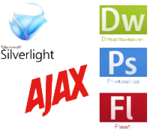Using Modern Technology to Maximize the Value of Legacy Applications
IIC’s application modernization services are designed to enable our customers to get the most out of their legacy applications
by taking advantage of advances in information technology. Rapid technology innovation provides businesses with the opportunity to achieve superior functionality, flexibility, performance,
scalability, and maintainability for business applications, but does require that businesses rapidly adopt and exploit the new technologies to maintain their competitive edge. IIC’s application
modernization services encompass a set of methodologies designed to preserve and extend customer investment in proprietary processes and know-how, as encapsulated in legacy enterprise applications,
while leveraging new technologies. IIC provides our customers with a wide range of application modernization services for their legacy applications, including:
- New System Platforms: Legacy applications written for specific hardware and/or operating system platforms can take advantage of new system architectures that can deliver a wide range of benefits, including improved system throughput and/or responsiveness.
- New Programming Languages: New programming languages offering greater portability, performance, data structures, protocols, software libraries, and modularity can substantially extend the life and flexibility of existing applications.
- Relational Databases: Many early applications that utilized flat files and hierarchical databases can be modified to take advantage of the benefits of relational databases. Changing the underlying data models into relational structures enables business to better extract the value of legacy data through greater query capability and improved performance. Database modernization also provides an opportunity to cleanse legacy data and eliminate duplication leading to greater efficiency.
- User Interfaces: The development of newer technologies for presenting information combined with evolving customer preferences for more usable and intuitive media has necessitated changes to application user interfaces to accommodate better graphical user interfaces as well as audio, video, and browser-based presentation.
- Application Architecture: Legacy applications can benefit from restructuring the underlying architecture to separate the business logic from the data access and the presentation layers. Implementing service-oriented architectures (SOA) enables enterprises to deliver data and services to users through web-based interfaces and other APIs.







